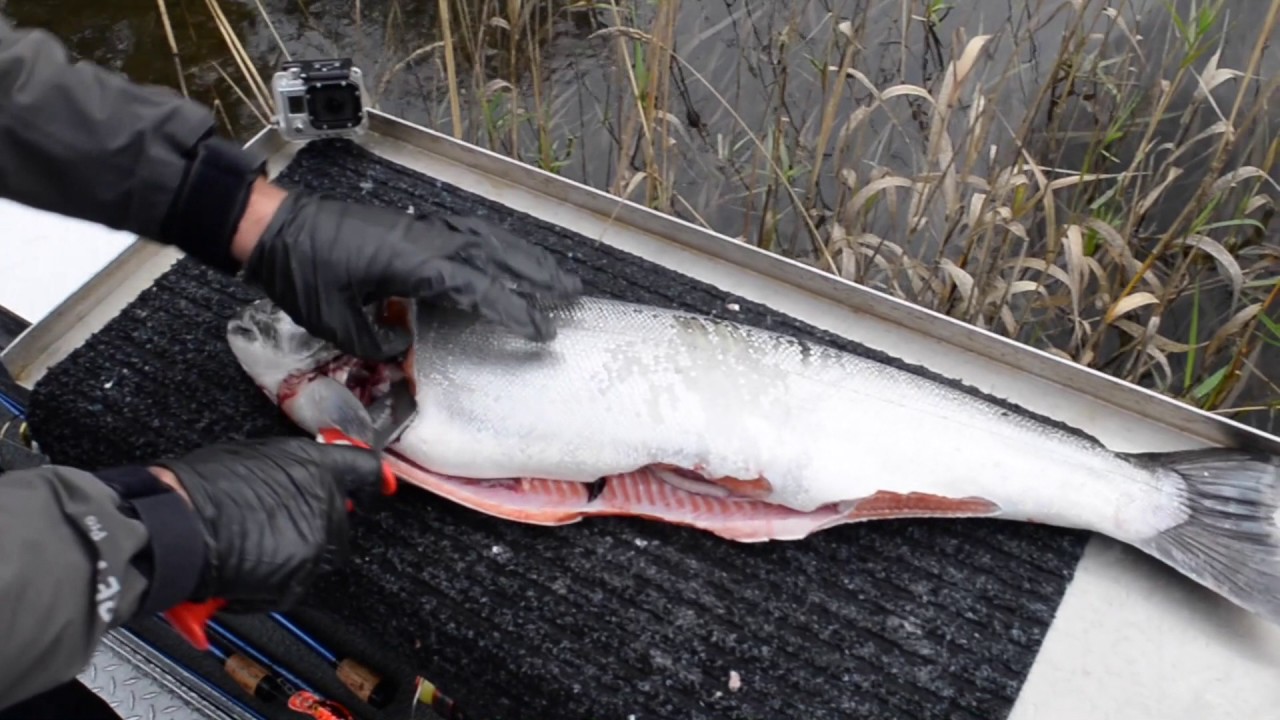Contents
Filet Salmon Quickly and Easily
Salmon filets are great for grilling, broiling, or sauteing. Getting them there can be a messy job. This technique skips the mess, producing perfect filets fast.
Cleaning, fileting, boning, and skinning can introduce drudgery to salmon fishing. After an exciting day fighting a prized sport fish like a big king salmon, the cleaning process can be an anticlimax. Try this method the next time. The filets will be ready for grilling, broiling or sauteing in no time.
Skip Salmon Cleaning Mess
Some crews will clean and filet the catch for passengers. For the less fortunate, it’s off to the cleaning table. Some ports have cleaning stations with stainless steel tables, running water, and grinding disposal to take care of the nasty bits. But for many, cleaning means spreading out reams of newspaper on the picnic table, soon to be a slimy, slippery mess.
While some look at it as simply a part of the experience, others merely endure it in return for getting the tasty filets to the table. Still, others have a physiological repulsion that makes it all but impossible to clean fish.
Perfect Salmon Filets
Try bypassing the cleaning part of the process. Rather than opening the fish up the belly, leave all that stuff right where it is. Suddenly, the processing part of the fishing trip gets significantly easier.
Go straight to the filleting knife. Ideally, it’s a flexible blade along the lines of a boning knife, which works quite well. Make sure it’s sharp the entire length of the blade. Don’t razor-hone the edges, though, because part of this technique features working around bones. A knife that’s too sharp can wind up cutting through bones rather than following their contours.
Salmon Fileting Technique
Start at the dorsal fin, which provides a stable spot to position the knife. Insert the blade along the backbone and follow the spine its entire length in both directions. Once the full length of the filet is free from the backbone, go to the tail and slide the knife across the spine to begin to free the entire width of the filet. Work up the backbone towards the head, stopping at the rib cage. Begin working the blade along with the rib bones, slowly peeling the filet along the way.
Towards the front end of the rib cage, it will be necessary to cut the filet from the top of the back behind the head down to the belly. As the knife passes behind the gill plate, be careful not to let it puncture the belly cavity. Keep boning along the rib cage until the filet is free. Repeat on the other fileT.
Quick Cleanup
It may take a little practice, but it’s a skill worth honing. The advantage is that the innards are left intact, along with the head and the rest of the skeleton. Cleanup mainly involves dumping the whole carcass into the garbage.
Salmon Roe, a Delicacy
Obviously, one of the disadvantages is that if the fish is a big hen bursting with eggs, the roe is still inside the belly. If that’s the case and the angler prefers to harvest the roe, a single relatively short incision will free it without opening the cavity its full length.
Skinning Salmon
Skinning is optional. If desired, it’s readily accomplished with a knife that will span the full width of the filet. Free a small flap of skin at the tail end of the filet. Position the knife at about a 30-degree angle to the skin. Grab the free flap and hold it tightly, moving the blade up the skin towards the head end of the filet. With a little practice, the skin will slide off cleanly.

